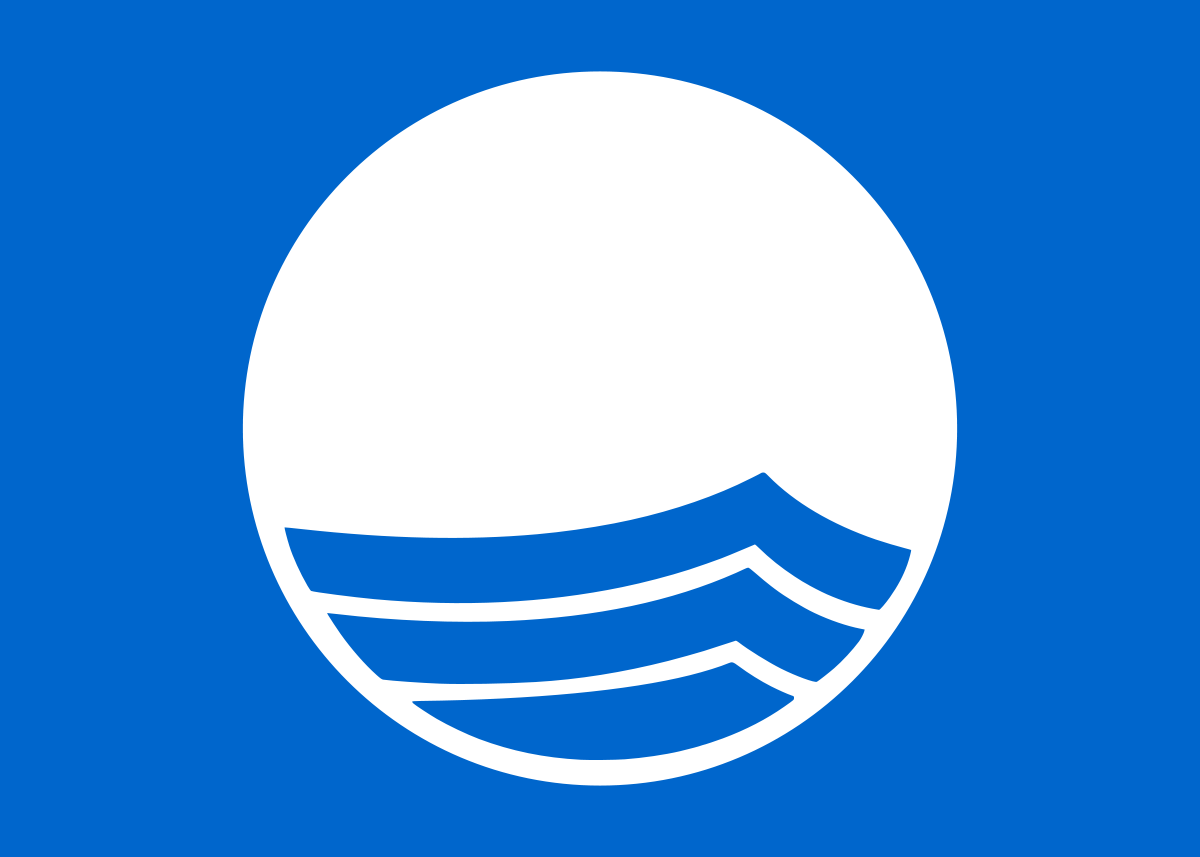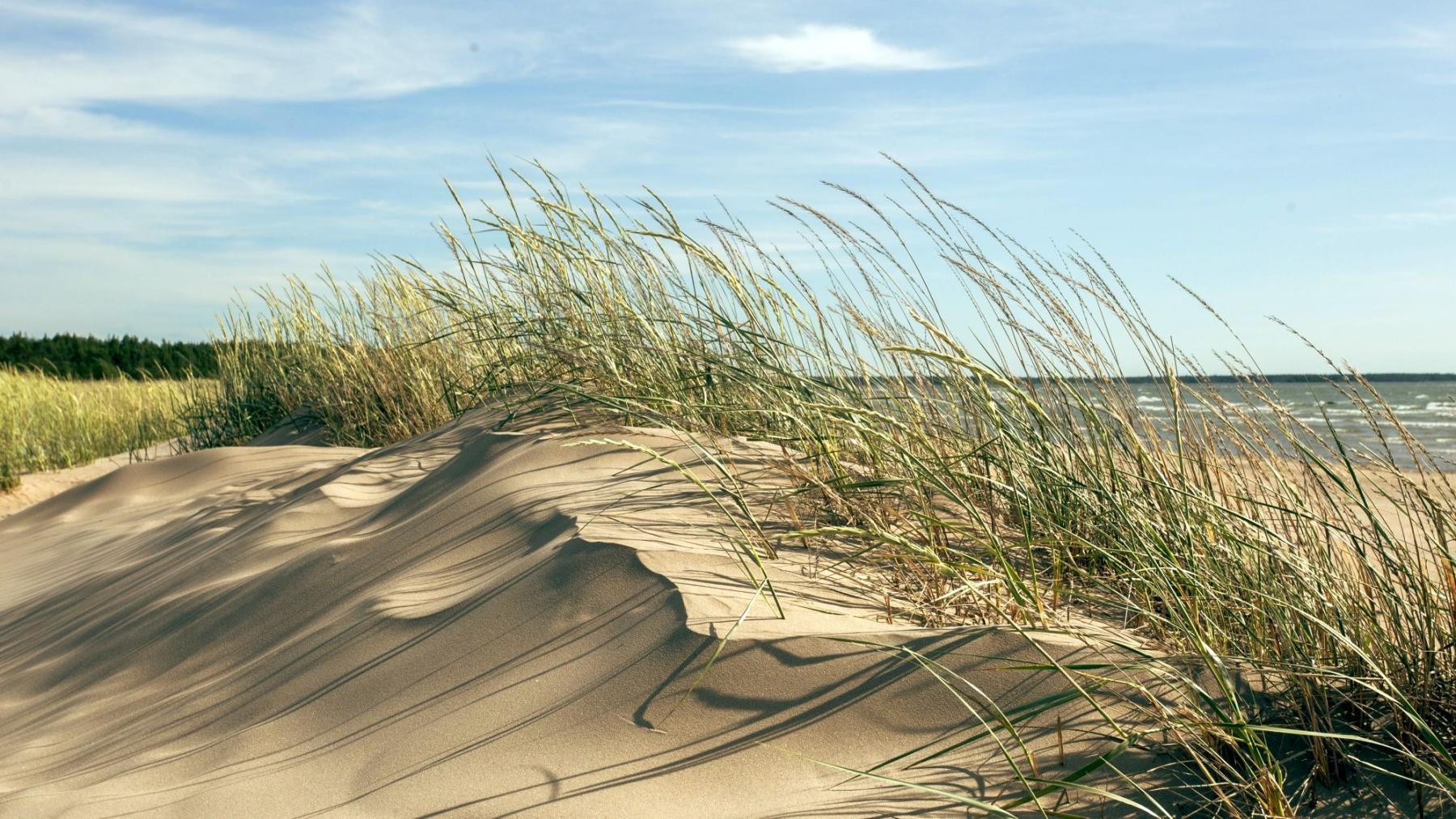
35th anniversary of a Blue Flag outdoor award. Here's what it's about
The year 2022 marks the 35th anniversary of a Blue Flag beach award, which has been given to the best beaches around the world since 1987. But also marinas and tourist boats.
The name of the award clearly indicates what it's about. The presence of the flag at these places, organizations, and companies says about their high quality and helps to distinguish them from the rest, which is, as you well know, often not as easy as it seems.
In this article, we'll break down what the Blue Flag beach award is, how exactly it's awarded, the actual number of places with the Blue Flag in different countries, and where to find the best beaches, marinas, and boat operators in the world that have already received the award as of 2022.
What is a Blue Flag beach award meaning?
The Blue Flag is one of the main, so to speak, outdoor awards in the world. It is awarded for the best beaches, but also marinas, and sustainable tourist boat operators around the world.
The third category for tour operators is relatively new: it appeared only in 2016. It is about boat-based tourism activities like nature watching (whale watching, bird watching, etc), cage diving, recreational fishing, and general crewed charter tours.
The program behind the awards appeared two years earlier — in 1985 in France and initially worked only within Europe. It is organized by the Foundation for Environmental Education (FEE), an international non-profit organization headquartered in Copenhagen, Denmark, which has been operating for over 41 years since 1981. Besides Blue Flag, it is also known for the four other similar programs it runs: Eco-Schools, Young Reporters for the Environment (YRE), Learning about Forests (LEAF), and Green Key International.
As of 2022, according to the official website of the program, 5,042 places, organizations, and companies in a total of 48 countries own the Blue Flag. The number of countries and specific locations increased every year, as did the rigidity of the criteria.
The flag symbolizes not just good or even high quality, but excellent. To receive the award, you have to meet a large number of criteria. Consequently, when you see a blue flag with a special logo on one of the places, you can be sure it possesses all these characteristics.

Blue Flag beach award logo. Blueflag.global
How do they choose a Blue Flag beaches, marinas, and tourist boats?
For beaches and marinas, the Blue Flag award is based on a single list of four main criteria, each of which includes up to 10 or more additional sub-criteria:
- Environmental education and information
- Water quality
- Environmental management
- Safety and services
For example, in Water quality, the jury marks such parameters as 1. Compliance with the requirements and standards for excellent bathing; 2. No industrial or sewage-related discharges may affect the beach area; 3. Monitoring on the health of coral reefs located in the vicinity of the beach.
The list of criteria for sustainable tourist boats operators includes the four above-mentioned parameters, but also two others: Social responsibility and Responsible tourism. But that's not all. According to the official site of the Blue Flag, "in addition, tour operators that offer whale watching, bird watching, seal watching, cage diving, recreational fishing, and diving have to comply with additional criteria for the respective activity."
In other words, given the huge list of criteria, getting a Blue Flag for the beach and marina is difficult, and for the operator, it is even more difficult (hence also the operators with the Blue Flag are much fewer than beaches and marinas).
Now the most interesting part. The leader in the number of Blue Flag locations of all the countries participating in this program is Spain with 729 locations, of which 621 are beaches, 103 are marinas, and 5 are tourism boats. Spain has also been in the lead every year since the Blue Flag's inception.
In second and third places are Greece and Turkey with 602 (581 / 15 / 6) and 572 (531 / 24 / 17) sites, respectively.
The next seven places in the top ten, where the number of awarded places also simultaneously exceeds 100, are as follows:
It should be noted that Spain, which takes overall first place is not the leader in the number of marinas. In first place is the Netherlands (130), the second place is France, and Spain comes next.
The country with the most sustainable tourist boats operators marked by a Blue Flag is same Mexico (31), as well as Portugal (20), and Turkey (17).
The fewest places with Blue Flags are Chile (one beach), Trinidad And Tobago (one boat operator), Serbia (one beach), as well as Finland (one beach and one marina). All other places have more than three sites.
Finland's case is very telling. Awarding Yyteri Beach, the main and most popular beach in Finland, located on the coast of the Gulf of Bothnia of the Baltic Sea in the west of the country near the town of Pori only in May 2022 and a group of marinas (Mariehamns Seglarförening, Godby Smäbätshamn, Ytternas, and Eckero) on Åland Islands between Finland and Sweden in 2020, once again (and clearly) shows how difficult it is to get this award, considering that Finland is traditionally distinguished from other even the European countries by its clean nature and care for it, developed tourist infrastructure and so on.
Consequently, the Blue Flag can also be taken into consideration when choosing a particular tour operator. Or, the whole country: where there are more beaches and marinas, there is, accordingly, a greater chance of getting to them without a prior search.

Yyteri Beach. Arno Ryser / Unsplash
Where to find Blue Flag beaches, marinas, and boat operators?
You can find all these Blue Flag locations on the interactive map on the official program website: Blueflag.global/all-bf-sites.
To get more information about them, go to Windy.app’s database of spots, which contains information about tens of thousands of beaches, marinas, and tour boat operators around the world.
On the site, go to the Spot section or search on the Home page or use the Spot Finder.
In the app, spots for kitesurfing, windsurfing, and surfing will in most cases correspond to specific beaches. You can also find them through the search on the Home screen of the app or on the Weather Map, where you can also select particular types of spots you need and hide the ones you don't want to be on the map to make your seach faster.
Selecting types of sports in the Weather Map's Settings in the Windy.app for iOS
Blue Flag beaches in Spain on the Weather Map in the Windy.app for iOS
Gerra Beach, Spain, surfing spot in the Windy.app for iOS
Gerra Beach, Spain, spot info in the Windy.app for iOS
The best way to find marinas is to use the same Weather Map in the app where you will get basic information about them and be able to contact them by phone or go to their websites directly from the map.
Marina Cabo Roig, Spain, and other ports on the Weather Map in the Windy.app for iOS
The tourist boat operators are located in the Services section of the app, which you will find on the page of each spot.
Tourist boat operators and other travel companies in the Services section in the Windy.app for iOS
Tourist boat operators and other travel companies in the Services section in the Windy.app for iOS
You can do the same in the WindHub, the Windy.app team's second app, which was created especially for sailors, boaters, and fishermen.
Marinas on the Weather Map in the WindHub for iOS
La Marina de València on the Weather Map in the Windhub for iOS
You can also add new Blue Flag spots or operators to the app if you don’t find them in the database, which also allows you to get a one-month trial version of the app so you can test all of its features seamlessly. If you are a Blue Flag company you can also add information about yourself and your offerings and run a successful business with the Windy.app.
Text: Ivan Kuznetsov, an outdoor journalist, editor and writer from the Dolomites, Italy, and Karelia, Finland, with 10 years of professional experience. His favorite sports are hiking, cycling and sauna. Read his other articles
Cover photo: Troy Williams / Unsplash
You will also find useful
Nautical mile vs mile: let's see how they differ
Latest News
Professional Weather App
Get a detailed online 10 day weather forecast, live worldwide wind map and local weather reports from the most accurate weather models.
Compare spot conditions, ask locals in the app chat, discover meteo lessons, and share your experience in our Windy.app Community.
Be sure with Windy.app.



